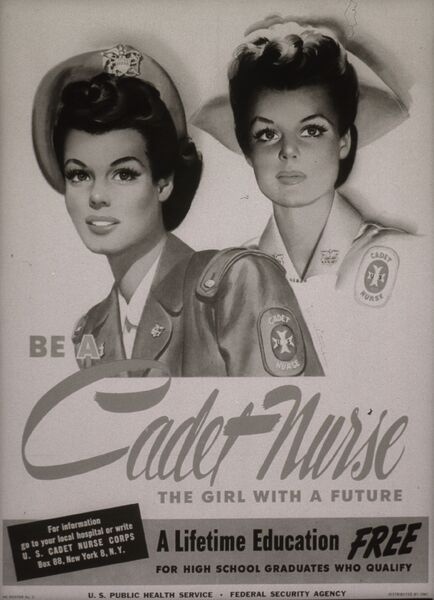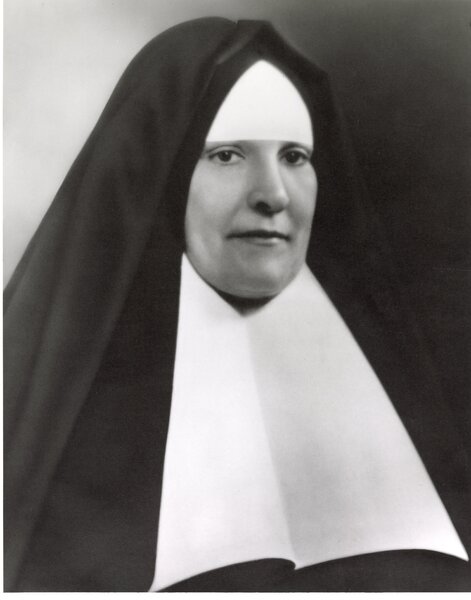U.S. Cadet Nurse Corps
With nurses volunteering for military service, a desperate shortage of nurses on the home front, in both general and government hospitals, ensued. Looking for a way to deal with the crisis, the Federal Security Agency sponsored a series of conferences attended by representatives from major nursing and hospital associations. These conferences resulted in Ohio Congresswoman Frances Payne Bolton, a longtime friend of professional nursing, introducing a bill in the United States Congress to create the U.S. Cadet Nurse Corps. The Nurse Training Act, a.k.a. the Bolton Act, was enacted on 1 July 1943. It provided federal funds to subsidize the full education of nursing students by paying for tuition, books, uniforms, room and board, in addition to providing monthly stipends for the students. For acceptance in to the Cadet Nurse Corps, nursing students needed to be between the ages of 17 and 35, a high school graduate, in good health, and eligible for enrollment or currently attending a school of nursing that participated in the program. Cadet Nurse Corps students also pledged to serve in the military or essential civilian nursing for the duration of the war.
An Advisory Board for the Cadet Nurse Corps was established. Composed of representatives from hospitals, nursing, and medicine, the board determined the rules and regulations necessary to establish and administer the corps. Sister Helen Jarrell, RHSJ, director of the Loyola University School of Nursing, was among the distinguished leaders appointed to the Advisory Board. Her work on the Advisory Board influenced many schoools of nursing in the Chicago area to participate in the Cadet Nurse Corps program.
Schools of nursing were required to accelerate their curriculums from the traditional 36 months to 30 months or less in order to participate in the program and receive federal funding. Further, schools had to provide adequate education in nursing care along with supervised clinical instruction in the areas of medicine, surgery, obstetrics, and pediatrics. The program for cadet nurses was arranged in three levels: pre-cadet; junior cadet; and senior cadet. The pre-cadet level was nine months in length and consisted of education in basic sciences and nursing skills. The junior cadet level, which was fifteen to twenty-one months in length, consisted of a wide variety of clinical experiences. The senior cadet period was twelve months or less in length. Similar to an internship, it consisted of clinical experience either in the hospital connected to the school or in federal nursing services, such as public health or veterans hospitals.
All of Loyola University's affiliated schools of nursing participated in the Cadet Nurse Corps program. In September 1943, St. Bernard's School of Nursing, where Sister Hellen Jarrell, RHSJ, had been the director, became one of the first schools of nursing in Chicago to be approved for participation in the program and receive federal funding. The Daily News reported that 130 students were enrolled in St. Bernard's first Cadet Nurse Corps class. The St. Francis Hospital School of Nursing soon followed with the announcement that 125 young women had joined its first Cadet Nurse Corps class. During the autumn of 1943, St. Elizabeth, St. Anne, St. Joseph, and Columbus Hospitals' schools of nursing joined the Cadet Nurse Corps program. In an article announcing Loyola's June 1945 Graduation exercises, the Chicago Daily Tribune stated that the 219 women receiving their certificates from the six Loyola affiliated schools of nursing were "...virtually all members of the Cadet Nursing Corps."

